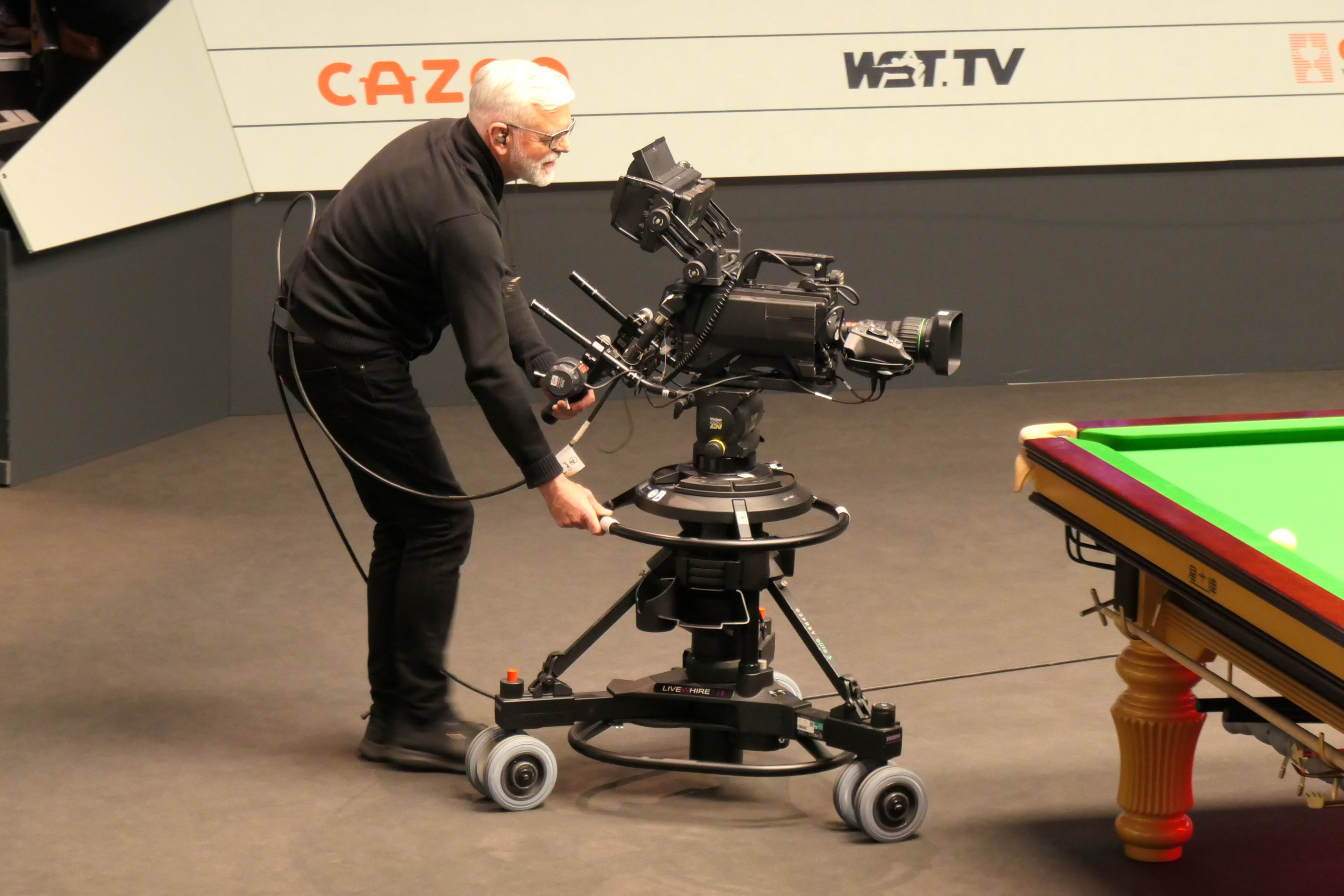Capturing Precision Shots with Vinten Osprey Pedestals
Filming snooker is challenging and enjoyable for the camera operator

BRISTOL, U.K.—I have worked on snooker (billiards) television outside broadcasts as a cameraman since 2003—and in that time, have seen an incredible evolution in television production, a big rise in snooker’s global viewing figures, and a growing interest in the sport.
Cutting-edge technology and craft allow us to analyze every part of the game. For example, high-speed shutter cameras show bouncing balls and kicks that are imperceptible to the naked eye, really bringing a new dimension to the skills of the players.
Filming snooker is challenging and enjoyable for the camera operator, and the length of the day and high production values test the reliability and quality of the equipment to the maximum. Where else would you film an unscripted drama combined with a top sporting event live on network television for such long periods of time?
Nimble Deployment
To shoot snooker, I have found the Vinten Osprey to be an ideal tool; its lightweight design allows nimble repositioning and subtle adjustments in a confined working space. It really does draw on a unique skill set with pedestal operation and the ability to read a snooker table inexorably intertwined.
In snooker, you have to think quickly, as there is only a small window to prepare for the next shot and be in position so that the flow is uninterrupted. There is no other environment where you are literally so close to elite sportsmen—it is almost a choreographed dance between the snooker player, referee, and cameraman.
Thanks to the Vinten Osprey Pedestals, we can maximize our creative output by using everything the Osprey has to offer. For instance, at the beginning of a frame, we might ped down from the maximum to minimum height, tracking around the trophy, enabling us to build the event with foreground and background interest; we are limited only by our own imaginations.
The Crucible Theatre in Sheffield is named aptly for the white-hot tension that the World Championships create. John Virgo, the legendary commentator, describes “being able to play as if it means everything and nothing”—in other words, to be able to bring your practice game to this incredible stage, to be relaxed yet fully focused.
The professional video industry's #1 source for news, trends and product and tech information. Sign up below.
Osprey's Footprint
The Vinten Osprey, cameramen, and players alike have to deliver, and we’ve been very fortunate to work with equipment that is reliable and lets us express our creativity. The other crucial factor is the small footprint of the Osprey—space is at a premium at most venues, and in ergonomics, the compact Vinten design ticks all the boxes.
The smooth column is another great asset; by changing the height, we can add drama to the simplest of shots. For instance, at the end of Mark Selby’s 147 at last year’s World Championships, by using a gentle ped-up as the black is potted, we could then include the crowd and really make the viewer feel as if they were at the venue. For this move, the smoothness of the Osprey was essential.
I also like the fact that I can adjust the legs of the Osprey to narrow its footprint during transport, enabling access through small doorways; this helps with the rig and de-rig, which often take place through crowded backstage rat runs.
To sum up, the Vinten Osprey is an essential part of our camera equipment as our craft has evolved to new levels. Snooker, more than any other television broadcast, pushes the Osprey to its limits, and it delivers.
More information is available at www.vinten.com.
James Cemlyn-Jones is a broadcast camera operator with over three decades of experience. He studied at Ravensbourne College, London, from 1985 to 1987 before working as a staff cameraman at HTV Bristol from 1987 to 1991. Since then, he has has a successful freelance career, filming events from Pakistan to Patagonia. His work has encompassed everything from royal funerals to Olympic Games capturing notable sports figures from Shane Warne to Ronnie O’Sullivan.
